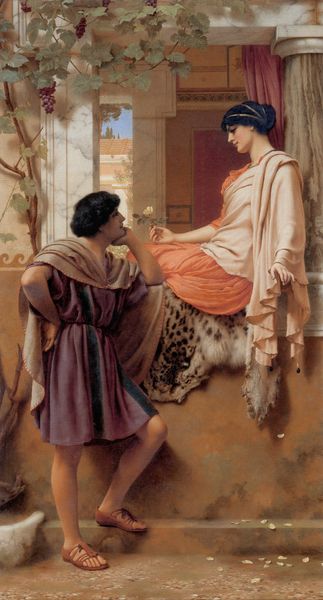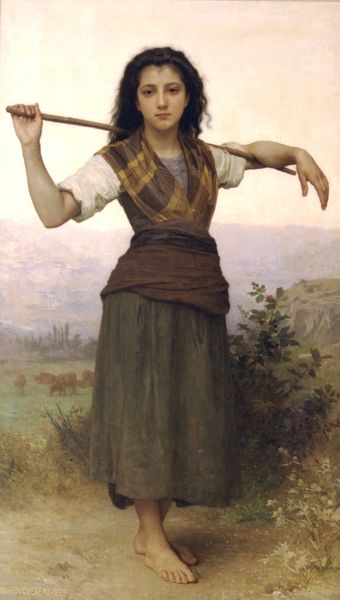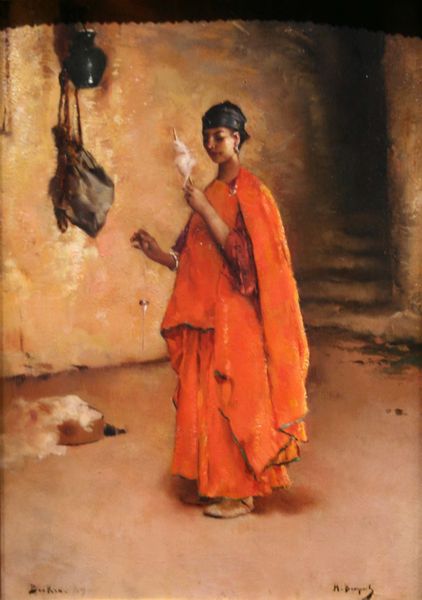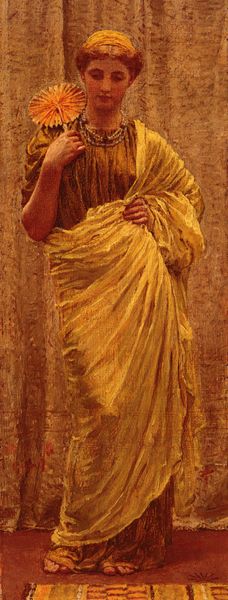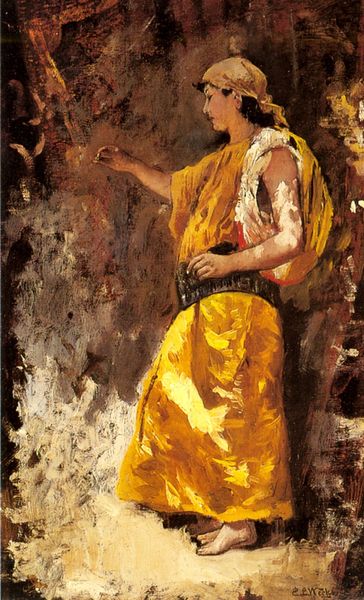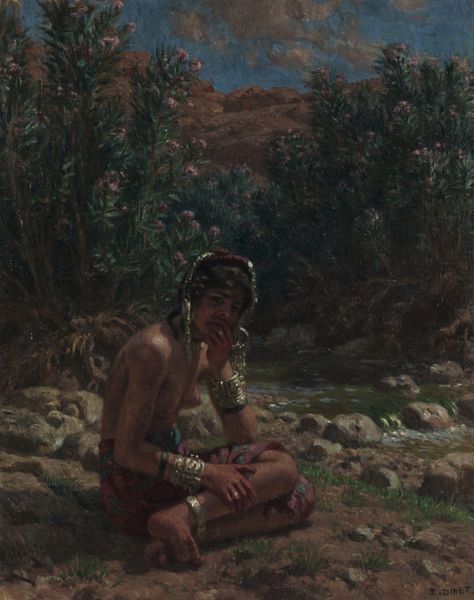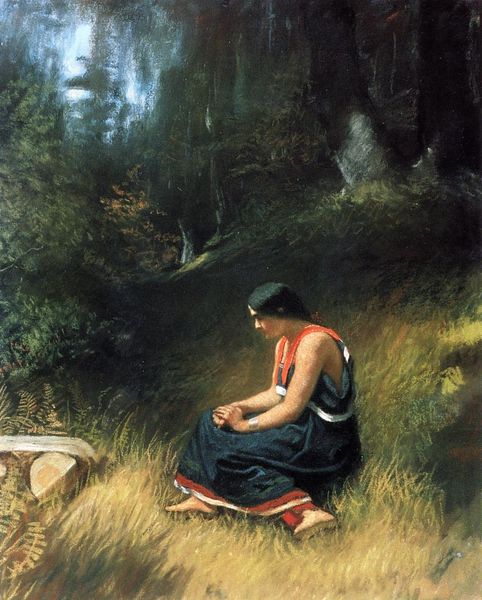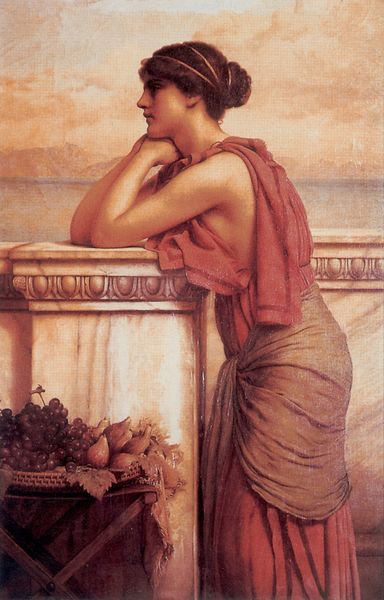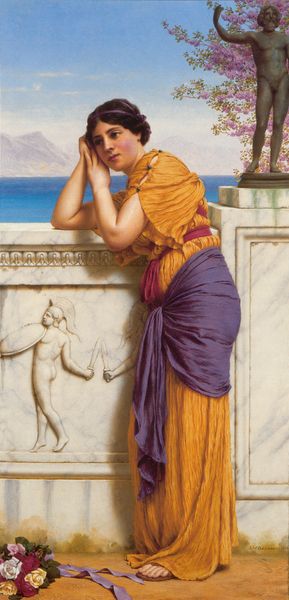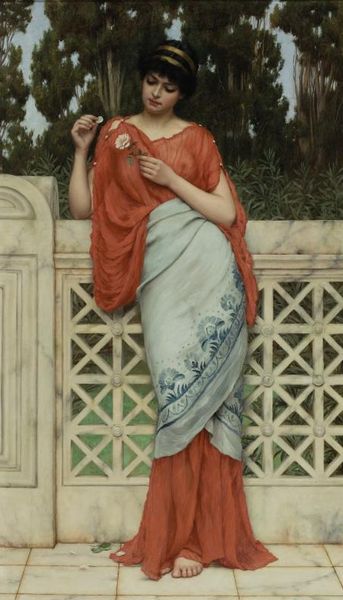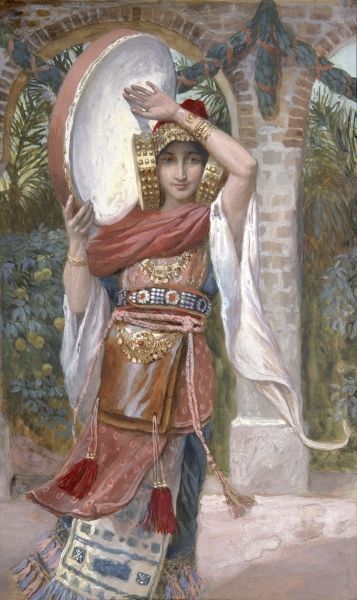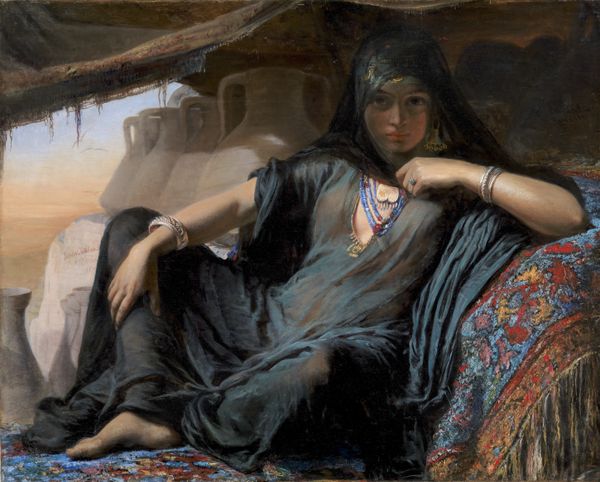
Copyright: Public domain
Editor: This is Émile Friant's "Spinner from El Kantara," painted in 1892. I’m immediately struck by the warm, almost earthy palette, and the woman's steady gaze. It feels very intimate. What nuances jump out at you? Curator: It invites us to consider a pivotal moment in art history. In the late 19th century, "Orientalism" captivated European artists, sparking complex debates about cultural representation. What appears as a simple scene of labor reveals a loaded encounter between Western gaze and "Eastern" subject. Note the details—the coarse rock against the smooth skin. Isn't that juxtaposition intriguing? It suggests a collision of textures, of worlds perhaps. How does that strike you? Editor: I see that! It’s a sharp contrast. The smooth and rough, maybe idealized versus real. Curator: Precisely! Friant uses light and shadow not just to illuminate, but to subtly emphasize power dynamics. Notice how her face, though soft, is firmly structured with light, holding a grounded, somewhat challenging gaze. What might she be thinking, do you imagine? Editor: I guess I hadn't thought of that. She’s not passive. She seems very… present. So, it is less about an "exotic" portrait, and more about...humanity? Curator: Yes! To look at this work through that lens – acknowledging the context, but seeking beyond it for a deeper connection. How does knowing some of this reframe your first impression? Editor: It shifts the focus for sure. From seeing a beautiful but distant scene, to thinking about how we engage with art that represents different cultures and, you know, finding shared humanity. It adds a powerful layer of complexity. Curator: And isn’t that what art’s all about? Reflecting and seeing things in new light!
Comments
No comments
Be the first to comment and join the conversation on the ultimate creative platform.
